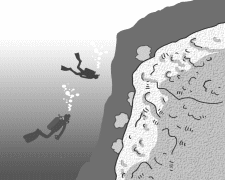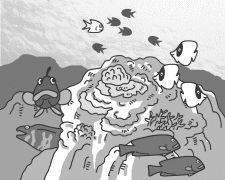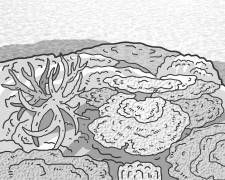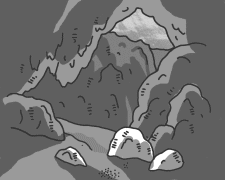■Drop-offs
Drop-offs are sudden, vertical slopes found relatively near to shore. At drop-offs we find magnificent scenery and the open ocean’s migratory fish.
|
 |
|
|
■Rocky Areas
Among rocky areas, those large clusters of large rocks or those resembling mountain ranges are referred to a grouping. When these groupings occur along the paths of migratory fish, many varieties of fish can be found feeding and cleaning.
|
 |
|
|
■Coral Reefs
Coral reefs are widely found in warm ocean areas. Crowded by colourful tropical fish, reefs are extremely popular dive spots. As coral growth is extremely slow, some formations take several tens or hundreds of years to develop. As a result, let’s take great care when diving around coral reefs to prevent breakage or damage.
|
 |
|
|
■Arches
When diving in any of the volcanic belts around the world, we often find lava arches. The contrast of light is very beautiful.
|
 |
|
|
■Caves
In caves, we find spiny lobsters and other sea life that prefer to hide in dark locations. In these locations that dive light you’ve prepared will come in handy!
For penetration of any long caves, specialized training is required. |
 |

